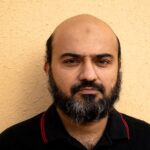Salient features
- Translated ancient medical treatise from Greek, Persian & Indian sources
- Pioneered the establishment of teaching hospitals
- Kept record of the patient information
- Represented physicians from diverse ethnic & religious backgrounds
- Started structured licensing of physicians
- Provided training in basic medical sciences (Anatomy, Physiology, Pharmacology)
- Structured clinical training
- Draw medical ethics on Islamic values
Background:
With the growth of Islam in the seventh century, a quest for the scientific explorations ignited in the land of Saracens. Within the decades after the passing of Prophet Muhammad (PBUH), the newly formed Caliphate witnessed a tremendous territorial expansion. By the end of the seventh century, its northern borders extend up to Trans-Oxonian provinces in Central Asia & Western borders stretched up to the of Berbers in the African continent. With the start of the eighth century, the Umayyad further expands its provinces in the Iberian Peninsula in West & Sindh on the Eastern flank. By the time when Abbasid ( a family that claimed to be descendants from Prophets Uncle) toppled Umayyad, the dominion of the Islamic empire covered three continents (Asia, Africa & Europe). The cities where once flourished the sciences of Greeks, Persian & other predecessors now became the part of the Islamic empire. Enriched with a multi-ethnic & multilingual population, the knowledge of old vessels were transmitted to the new world by Saracenic (Islamic) civilization.
“The blood stream of the old body, enriched with new experiences digested by the Arabs, was being transfused into a new vessel in Europe through the Moorish provinces of Spain and Sicily’
V.Gordon. Childe (1942), What happened in History
The work of prominent polymaths of the ancient Hellenic world such as Galen, Hippocrates, Dioscorides, & Rufus was translated in Arabic. For the centuries, the Arabic language became a lingua franca of scientific documentation. The eastern centers of Gondeshahpur (Persia) & provinces of Sindh provide a linguistic & scientific exchange with ancient Indian & Persian manuscripts.
Islamic Medicine
In the golden ages of Islamic sciences (7th -13th CE), the medicine as a specialty witnessed stupendous evolution & reforms that were mainly built on ancient knowledge of Greek, Persian & Indian sources. In the early days, the Prophetic Hadith, “Search for knowledge, even in China”, a geographically distant place in medieval ages, served as an impetus for the early physicians & scholars to conduct research & explore the existing body of medical knowledge from diverse sources. Al-Tibb al-nabawi (Prophetic medicine), a traditional approach for the cure of diseases given by Prophet (PBUH), also formed the basis for approaching sickness, treatment & role of the hygiene in healing in early days of Islamic Medicine. Coming from the authentic narration, the Prophet (PBUH) emphasized the role of treatment in the following words: “Make use of medical treatment, for Allah has not made a disease without appointing a remedy for it, except one disease, namely old age.” This notion was well advanced of its time as we can find even six centuries later in 13th century Europe, the idea of treatment moved around witchcraft, luck, charm, & wrath of God. One of the significant accomplishments of early Islamic medicine was the establishment of hospitals & the foundation of structured medical education. This write-up will summarize the key features & contributions of Islamic medicine towards Medical Education.

Early Translators
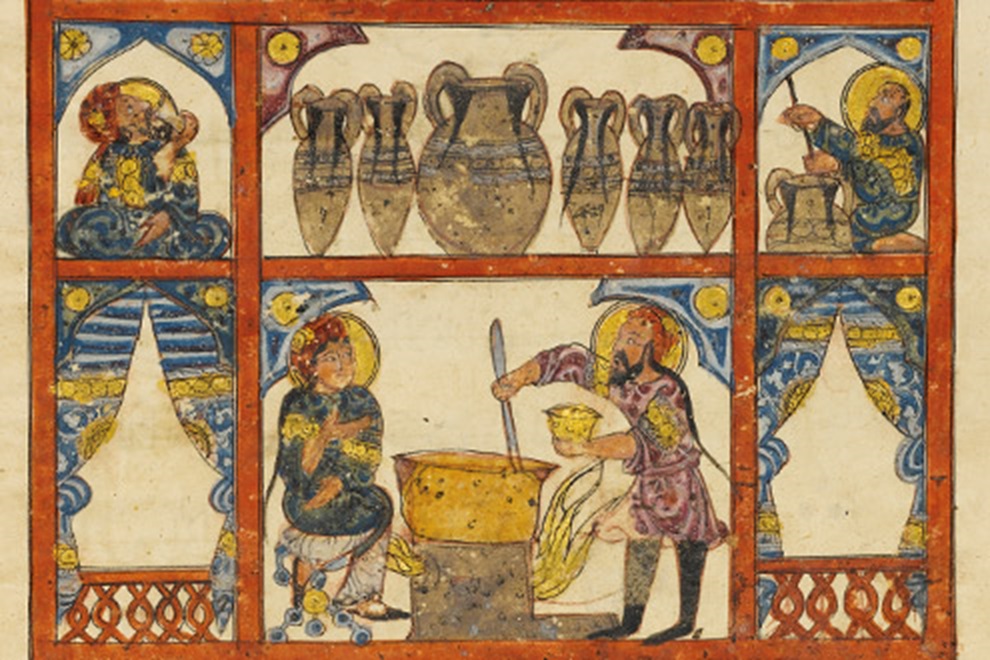
Some of the pioneers in the scientific translations of medicine in the Islamic world belonged to the Aramaic speaking Assyrian Nestorian Christianity. Jurjis Ibn Bukhtishu was the director of the hospital in Gondeshapur from where the trained physicians served the court of the Abbasid caliphs. For several generations, the Bukhtishu family remained as the head physicians & director for the Gondeshapur hospital that served as a learning center for the training of physicians. Yuhanna Bukhtishu served as physicians to three consecutive Abbasid Caliphs Mamun, Al-Wathiq & Al-Mutawakil. Yūḥannā ibn Masawayh (Filius Mesuë), a Nestorian Christian was another legendary physician from Gondeshapur who was appointed at Baghdad. Ibn Masawayh (b 777-d 857 CE) was one of the earliest clinical teachers in the history of Islamic medicine by exposing his students to patients. Among his students, the most notable was Ḥunayn ibn Isḥāq, al-‘Ibādī who was credited to translate the compendium of Galen in Arabic & Syriac in thirty-four versions. The Latin translation “Isagoge” of his work Kitāb al-Masa’il fī al-ṭibb li-l-muta ‘allimīn (Questions on the medicine for beginners) formed the conceptual framework of medieval European curricula till the evolution of early modern medicine. When the Byzantine monarchs considered these Nestorian Christians as heretic due to their sectarian rift, they were not only acclimatized by Abbasid Caliphs but lead the scholarly learning centers of Medicine in Baghdad. Hunayn, a Nestorian Christian, was appointed as the head for the Baitul Hikma (House of Wisdom) by Abbasid Caliph Mamun.
“The spirit of the Bermicides was continued by al-Mamun, Harun’s successor on the Caliphal throne, who founded a new academy on the bank of Tigris in 832 CE: the Bait ul-Hikma, the ‘House of Wisdom’. Here, massive numbers of manuscripts from every conceivable field of learning were translated from Sanskrit, Greek, Syriac, Persian into Arabic Collection”.
Ranjit Hoskote, & Ilija Trojanow, (2012), Confluences: Forgotten Histories from East and West
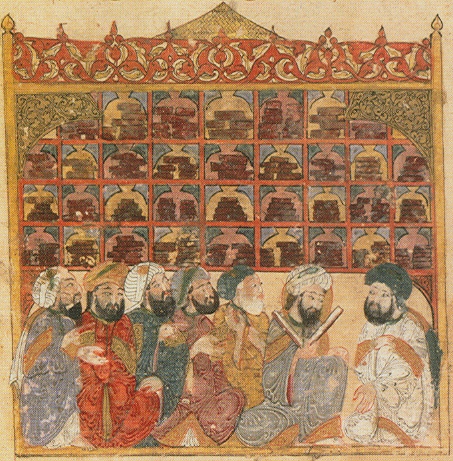
Hospitals

One of the most outstanding features of Islamic medicine was the establishment of hospitals. From antiquity, the medical centers were confined as an extension of temples where priests gave the treatment. It was an amalgamation of rituals, prayers & traditional. The mobile hospitals were evolved during the early days of Islam during the battle of the trench (Ghazwae Khandaq). It has reported that Caliph Umar established a center for the Christian lepers after the Syrian conquest. Ummayad Caliph Walid also established a Leprosarium in 707 CE at Damascus. The pre-Islamic medical center of Gondishapur (Persia) was upgraded by Ummayad’s & later Abbasid’s. The first independent bimaristan (hospital) of the Islamic era came in existence at Baghdad (786 CE) by the vizier of Abbasid Caliph Harun Rashid, Yahya Ibn Khalid Ibn Barmak. It was after his affiliation; the bimaristan became famous as Barmakid hospital. During heydays of the Barmiki family, the center flourished with scholarship & research. An archival Arabic account told us one Indian name as Ibn Dahan Al Hindi, who was appointed by Barmiki as administrator & also translated many Indian medical treatises in Arabic. By the start of the ninth century, the bimaristan established all across the cities of the Islamic world such as Al Qatai (Cairo) and Al Qayrawan (Capital of Tunisia). On the western flank of the Islamic world, the Iberian Peninsula that remained under the control of Umayyad Caliphs also witnessed a similar development in sciences & medicine. Cordoba, the capital of Moorish Spain, had almost fifty hospitals during 9th & 10th century with some of them reserved exclusively for the military while others served the purpose of teaching hospitals. The hospitals were financed & managed by government endowment (waqf). The treating physicians came from diverse ethnic & religious backgrounds. All the citizens had access to the treatment irrespective of their caste, gender, religion, & social status. Separate wards were allocated for male & female patients. The departmental distribution was made according to specialties such as orthopedics, psychiatry, Ophthalmology, & Gynecology. Based on the signs & symptoms of systemic diseases, the separate sections were allocated for fever, diarrhea, eye, infection, & wounds. The buildings had a regular water supply along with bathing facilities for patients. Most of the hospitals were equipped with libraries, pharmacy units, & lecture rooms. Even the musicians were hired where the music was used as a mood therapy for patients.
They preferred to erect bimaristans atop hills or along rivers. For example, the Al-Adudi Hospital was built near Baghdad’s Dejlah River in 981 AD. The river flowed through its courtyard and halls and returned to pour into the Dejlah. The Al-Mansuri bimaristan was one of the largest and most elaborate hospitals ever built. It had a total capacity of 8000 beds, and the annual income from endowments alone was one million dirhams . It freely served all citizens without regard for their colour, religion, sex, age or social status.
Andrew C Miller (2006), Gondeshahpur, Bimaristans, and rise of Academic Medical Centers, Journal of Royal Society of Medicine.
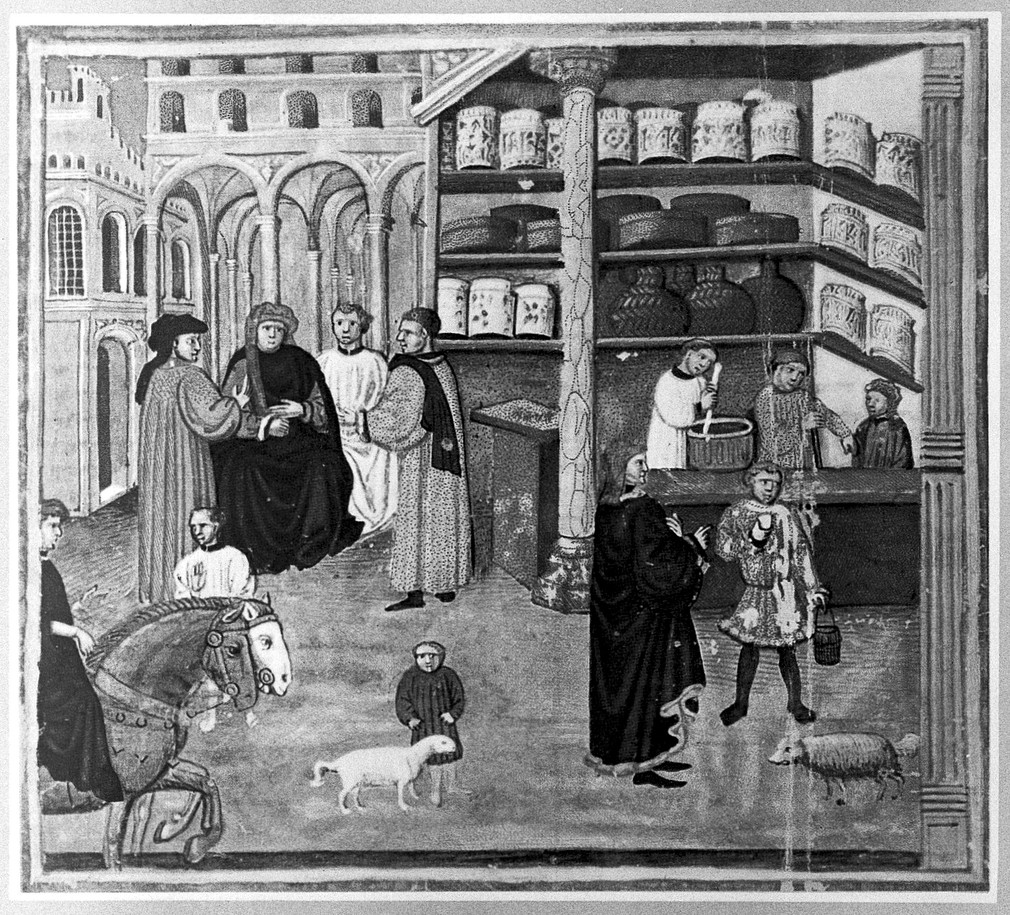
The library of Tulum hospital at Cairo (established in the 09th century) alone had a collection of approximately one hundred thousand manuscripts. The patients & their attendants received free food that was prepared under the supervision of the hospital. It is not an exaggeration to say that Islamic medicine was centuries ahead of its time that has evolved with the contributions of diverse ethnicities & scholarly basis coming from its predecessors, Greeks, Persians & Indian Medicine. It was all happening in the timeline of eight & ninth centuries, whereas we had reports of the lepers burned to death on the royal decree in 13th century Europe.
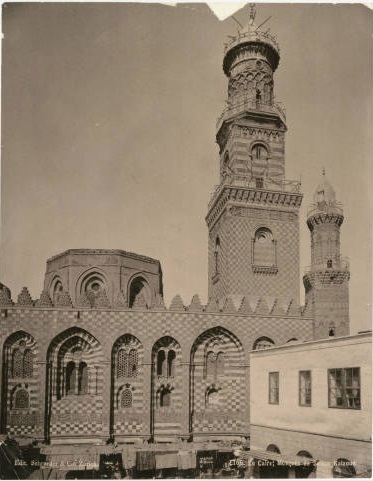
Record Keeping of Patient Information
Patient record keeping is one of the key features to attain high quality professional health care. The health data served as a tool that enhances the communication between different stakeholders of health care system. In digital era of 21st century, the medical informatics gave an opportunity of record keeping in form of digital data storage & retrieval. Do you know that early medieval hospitals of Saracenic world were credited to start the written documentation of patient records. The notes that covered clinical history, & details patient information along with treatment were documented by medical students. The clinicians finalized the records after further edits.
Licensing of Physicians
In contemporary medical education, the licensing boards examined the knowledge, skills & competence of physicians to ensure their safe professional conduct in health care. The roots of the physicians licensing exam go back to Saracenic medicine. An event took place in the year 931 CE at Baghdad. A patient passed away due to the error of some physician & it was reported to Caliph Al-Muqtadir. The chief physician was called & instructed to examine all the practicing physicians of Baghdad. From a total of eight hundred sixty, who appeared for the exam, one hundred sixty were disqualified from doing the medical practice. From then onward, the licensing board was formed under the supervision of Muhtasib (Inspector-General). After the successful clearance of exam, the students were provided with a license after undertaking the Hippocratic oath.
Training in Basic medical sciences
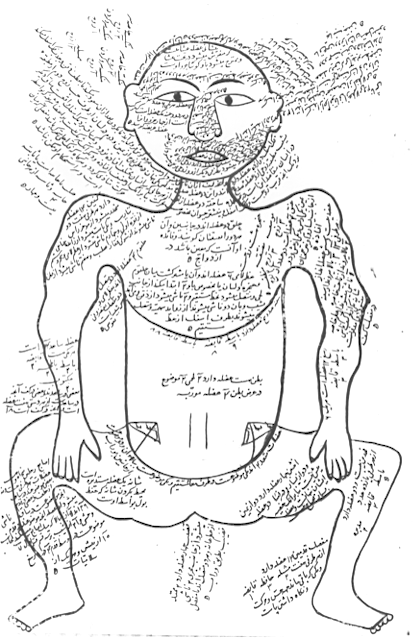
From The Anatomy of the Human Body (Tashrih-i badan-i insan) written in Persian at the end of the 14th century by Mansur ibn Ilyas Source: National Library of Medicine https://www.nlm.nih.gov/exhibition/islamic_medical/islamic_10.html
The chemistry was one of the prerequisites to enter the medical school. Anatomy, Physiology & Pharmacology from the baseline of medical training in Islamic Medicine. In some schools of Baghdad, the anatomy & physiology taught separately. The dissection was performed on animals & illustrations were also used in lectures. Anatomy was taught by dissection of apes, skeletal studies, and didactics. Pharmacology & Toxicology form the central core of the preclinical curriculum. From Hunayn Ibn Ishaq to 13th century Ibn Nafis, all physicians of Islamic medicine added notes & descriptions on Anatomy & Physiology in their treatise. The tenth-century Kitab Al-mansuri by Ibn Zakaria (Rhazes) was compilation on body structures by giving details on bone, muscles, nerves & blood vessels. He applied the concepts of neuroanatomy in clinical practice & described the role of recurrent laryngeal nerve. It was Ibn Nafis who critically reviewed the theory of circulation given by Galen & discovered the pulmonary circulation.
Clinical training
It is stunning to find that the clinical training practiced in the medical schools of the Saracenic world is almost imitable to the modern learning methods of the 21st century. There was a focus on small group learning. The students were attached with notable physicians where they complete wards, rounds, & discussions on patients. Today modern assessment methodologies in medical education focused on the direct observation of procedural skills (DOPS) in clinical training. Going back ten centuries before in teaching hospitals of the Islamic world, we can find the trainees were asked to perform history taking & physical examination under supervision. Then they were asked to collect the findings & finally need to present in the form of notes. The feedback of their performance was given & then the treatment was decided. The trainees were responsible entirely for the record-keeping of patients.
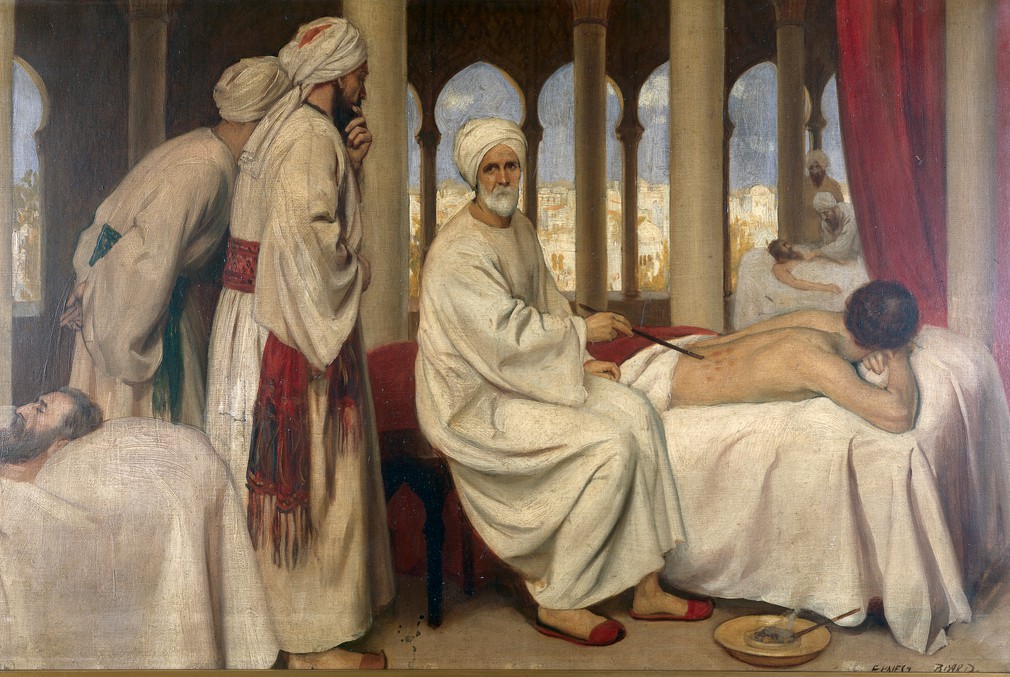
Medical Ethics
Though medical ethics has its roots from the Hellenic days as the fifth century BC Hippocratic Oath has relevance both in Islamic medicine & today’s modern medicine. Ethics in Islamic medicine mainly draws its framework from the Quran, Sunnah, & then Ijtihad of scholars. Akhlaq & Ihsan form the basis of the code of conduct for medieval Physicians. Ninth century scholar & physician Ali bin Sahl Rabban al-Tabari gave one of the earliest compilations on medical ethics in Islamic Medicine in his work Firdaws Al Hikma (Paradise of Wisdom). Tabari was born in an intellectual Syriac Christian family of Khurasan. His code of ethics mainly focuses on these four attributes:
- Personal character of physicians
- His obligation towards physicians
- His obligation towards community
- His obligation towards Colleague
Adab Al Tabib (Etiquettes for Physician) was one of the earliest compilations on the Medical Ethics in history of Islamic Medicine. It was written by Isḥāq ibn `Alī al-Ruhāwī in the 9th century CE. His treatise covered the topics in three categories, the conduct of Physician, the conduct of patient, & conduct of the public towards the medical profession. His book also embedded the issue of medical negligence, & legal suit of the physicians for the malpractice.
Notable personalities
- Hunayn ibn Ishaq al-‘Ibadi (809-873) was born at Al-Hira, Iraq. A Nestorian Christian whose father worked at the pharmacist. A legendary student of Yūḥannā ibn Masawayh. He and his team of translators at Baitul Hikma (House of wisdom) rendered the entire body of Greek medical texts, including all the works of Galen, Oribasius, Paul of Aegin, Hippocrates and the Materia Medica of Dioscorides, into Arabic by the end of the ninth century.
- Yuhanna Ibn Sarabiyun (800-900) popular in the European world with his Latin name as Sérapion. A Syrian Christian who has a great contribution in medical writings in 09th century Baghdad. His name was the first among four legendary Arabic polymaths who has been mentioned Geoffrey Chaucer, the Prologue to The Canterbury Tales (c. 1390)
- Abū Bakr Muhammad ibn Zakariyyā al-Rāzī (854-925), a Persian polymath who was born at Ray, now part of Modern Iran. History of Medicine, United States, National Library of Medicine introduced him as one of the greatest names in medieval medicine. His treatise “The disease of children” led some historians to be regarded as the father of pediatrics. He also authored a book on exposing malpractices of quacks. His books, which were translated in Latin and remained a part of the European medical curriculum for centuries.
- Abu `Ali al-Husayn ibn `Abd Allah ibn Sina (980-1037) known in west as Avicenna in the west. Born at Bukhara, & he took his tours all across the Islamic world. By the time of his death, he left around two hundred seventy treatises of which Kitab Al Shifa (Book of Healing) & Al Qanun Fi Al Tibb (Cannon of Medicine) remained part of medical curriculum for centuries all across Arab world & in Europe. His contributions were compared with Hellenic era physician Galen & regarded by some as Father of Modern Medicine.
- Abū al-Qāsim Khalaf ibn al-‘Abbās al-Zahrāwī al-Ansari (936-1013) known in west as Abulcasis. He was born at Medina Azahra in Al Andalusia, now modern Spain. His ancestors belonged to Al-Ansar tribe of Medina in Hejaz, Arabia. He has served at the court of Caliph Al Hakam II. His treatise “Al Tasreef Liman’ Ajaz ‘Aan Al-Taleef“, (The Clearance of Medical Science For Those Who Can Not Compile It) is a compilation of his experiences as Physicians & Surgeons with thirty volumes. He was credited with performing the first thyroidectomy (surgical removal of the thyroid gland). Also considered as the father of modern surgery who has introduced around two hundred surgical instruments. His translations of surgical chapters from Al Tasreef were published at Venice (1497), Basel (1541), Oxford (1778). Some of his notable innovations in medical technology were the development of the vaginal speculum and forceps, usage of animal gut in sutures, applying cotton to dress wounds, and usage of a “concealed” surgical knife to allay anxiety patients.
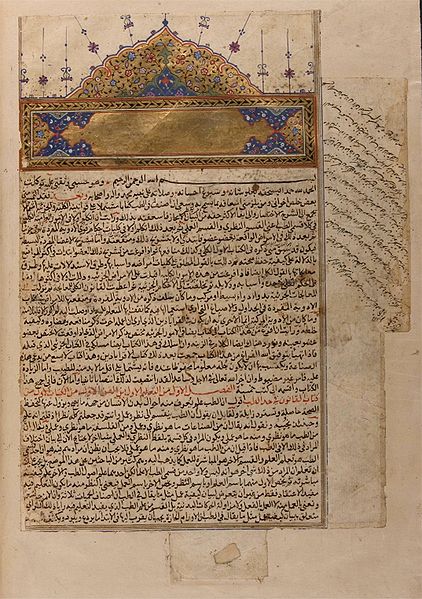

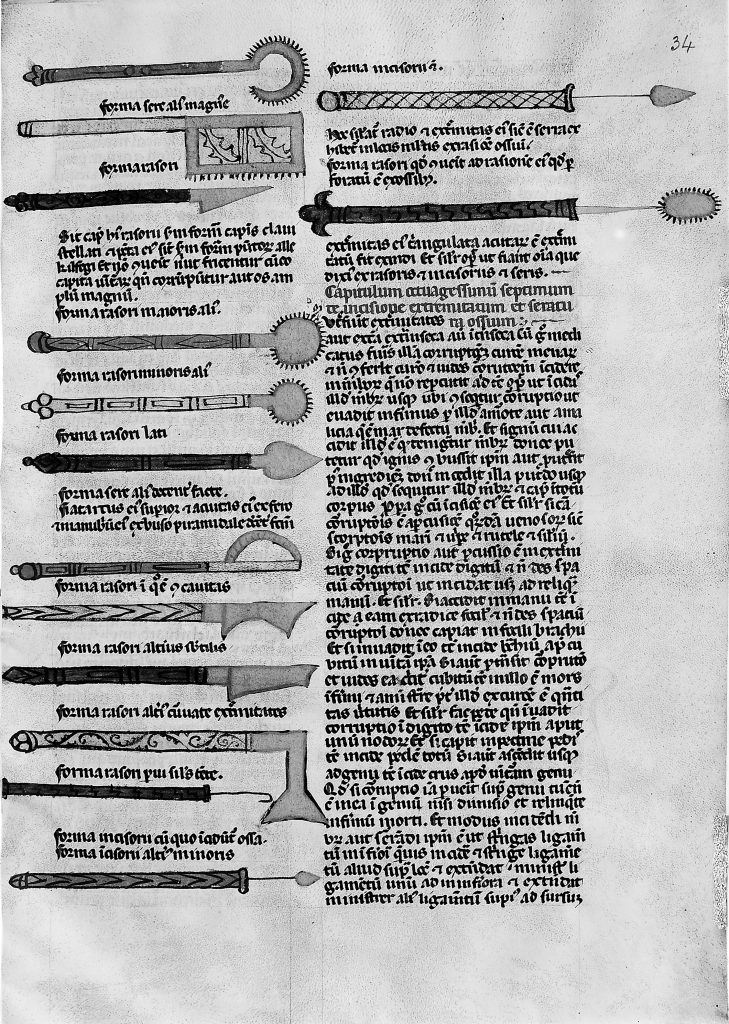
- Abū-Marwān ʻAbd al-Malik ibn Abī al-ʻAlāʼ Ibn Zuhr (1094-1162) who is known in west as Avenzoar. Born at Seville, then the province of Al Andalusia (Spain). His ancestors from the last six generations were Physicians. His compilation Kitab al‐Taisir fi al‐Mudawat wa al‐Tadbir/ Practical Manual of Treatments and Diet and Kitab al‐Aghziya/Book on foodstuffs were translated into Latin in the late 13th century and used in European universities until the 18th century.
- Hasdai Ibn Shaprut (915-970) born at Jaen & died at Cordoba, Al Andalusia (Spain). He was a son of a wealthy Jewish family from Jaen who studied Latin, Hebrew & Arabic from his formative years. As a polymath, he was a scholar of multiple disciplines, but he got fame for his career as Physician & diplomat in Caliph Abd Ar Rehman III. When Sancho I, the prince of Leon, was overthrown from his kingdom in 958 by rivals, they took help from Abd Ar Rehman III. During this time, Ibn Shaprut was assigned to the Sancho I for reducing his morbid obesity. After lowering his morbid obesity, he was sent by reinforcement given by Caliph to restore his lost throne.
- Abū l-Walīd Muḥammad Ibn ʾAḥmad Ibn Rušd (1126-1198) born at Cordova (Spain) & passed at Marrakesh (Morocco). He was popular in west as Averroes. In medicine his treatise Kitab al-Kulyat fi al-Tibb is combination of Anatomy, Physiology, Pathology, Pharmacology, Hygiene, Symptomatology & Therapy. During his life time, it was translated in Latin at Granada. The Latin translation “Colliget/Generalities on Medicine” was the part of European medical curriculum till 18th century.
The article is an attempt to review medical education in early Islamic Medicine as historical perspectives. Syed Ibrahim (Clinical Professor at University of Louisville, School of Medicine) review article “Islamic Medicine: 1000 years ahead of its time” cited that many attributes of modern medical education were built on system evolved during this early phase of Islamic Medicine. Andrew C Miller, review article elaborated a significant point as relevance for this title. He said “Medical profession that is built on the ethics of seeking the right knowledge in the world, an acknowledgment of the non-western world towards medicine & medical education needs loud evidence based articulation“. It’s an amazing phenomenon that happened in the rise of early Saracenic civilization where we saw the fusion & evolution of knowledge imbibed from diverse Hellenic, Persian, & Indian predecessors. The vast empire of the Islamic world became a melting pot for the cultures. Islamic medicine is one of the most shining facets of early Saracenic civilization, where we saw the participation of Arabs, Persians, Indians, Zoroastrians, Jews, and Nestorians.
(Arnold and Guillaume, Legacy of Islam, 1931)
Looking back we may say that Islamic medicine and science reflected the light of the Hellenic sun, when its day had fled, and that they shone like a moon, illuminating the darkest night of the European middle Ages; that some bright stars lent their own light, and that moon and stars alike faded at the dawn of a new day – the Renaissance” .
References:
-
- Andrew C Miller (2006), Gondeshahpur, Bimaristans, and rise of Academic Medical Centers, Vol 99 (12), Journal of Royal Society of Medicine.
- David, W, Tschanz (2001), Hunayn Bin Ishaq, The great translator, Vol 1, Journal for International society of History of Islamic Medicine.
- Fernando Delgado, (2012), The Neurosciences in Averroes “principles of Medicine”, Vol 32(3), Annals of Saudi Medicine.
- Gordon Childe (1952), What Happened in History, Vikings, 2nd Ed.
- Khalil G Wakim, (1944), Arabic Medicine in literature, Vol 32(1), Bulletin of Medical Library Association.
- Plinio Priorschi (1996), A History of Medicine, Byzantine & Islamic Medicine, Horatius Press.
- Thomas Arnold & Alfred Guillaume (1931), Legacy of Islam, Oxford: Clarendon press.
- Ranjit Hoskote, & Ilija Trojanow, (2012), Confluences: Forgotten Histories from East and West, Yoda Press.
- Syed Ibrahim B (2002), Islamic Medicine: 1000 years ahead of time, Vol 2, Journal for International society of History of Islamic Medicine.
- Bio-bibiographies, Islamic Medical Manuscripts at National Library of Medicine. Retrieved from https://www.nlm.nih.gov/hmd/arabic/bioY.html, last reviewed 2014.
- Al-Razi, the Clinician, Islamic Culture & Medical arts, History of Medicine, National Library of Medicine, last reviewed 2011.
Rehan Asad is a medical doctor & currently working as an anatomy faculty. He has a penchant for writing people, food & culture stories.

